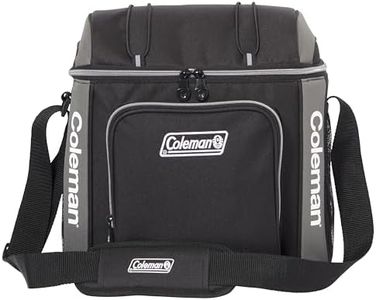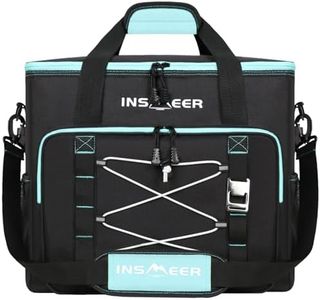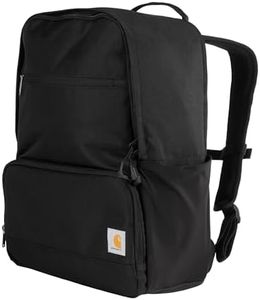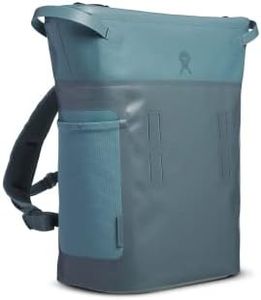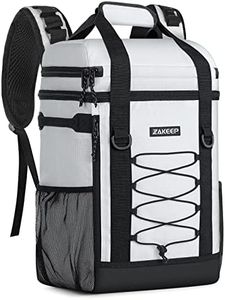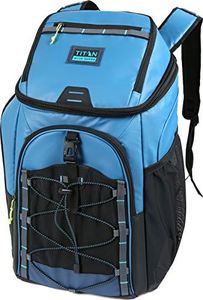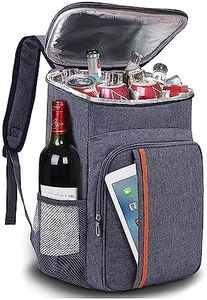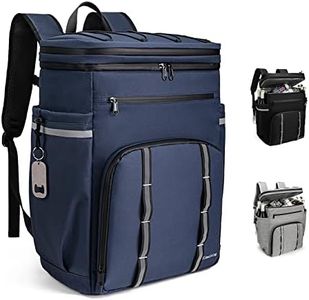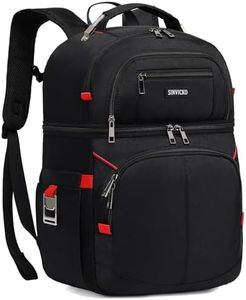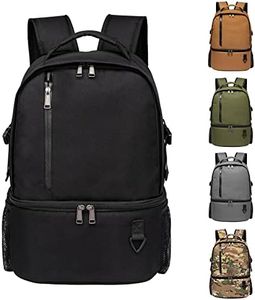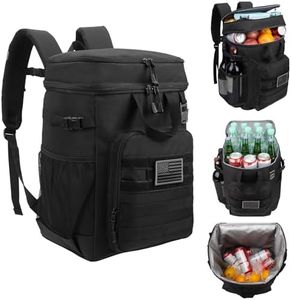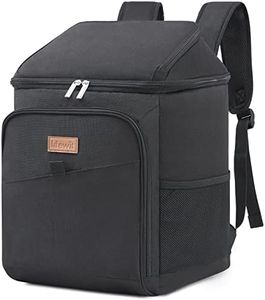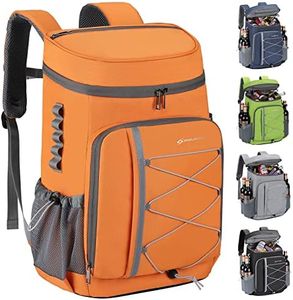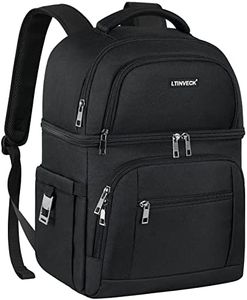We Use CookiesWe use cookies to enhance the security, performance,
functionality and for analytical and promotional activities. By continuing to browse this site you
are agreeing to our privacy policy
10 Best Insulated Backpack Coolers
From leading brands and best sellers available on the web.Buying Guide for the Best Insulated Backpack Coolers
When choosing an insulated backpack cooler, it's all about finding one that matches how you'll use it. Think about how often you'll carry it, for how long, and where you'll be going. The right cooler should be easy for you to handle, able to keep your food and drinks at the right temperature for the needed time, and sturdy enough for your activities, whether it's a picnic in the park or a long hike. It's important to understand the key features so you can make a choice that keeps things cool and suits your lifestyle.CapacityCapacity tells you how much the backpack can hold, usually measured in liters or by the number of cans. This is important because it determines whether you'll be able to carry enough for yourself or for a group. Smaller capacities, around 15-20 liters, are great for one or two people or short trips, while medium sizes up to 30 liters suit small groups or family outings. For big gatherings, look for even bigger options, but remember these will be heavier and bulkier to carry. Think about how much food and drink you typically want to bring with you and choose a size that matches your usual needs, balancing comfort and practicality.
Insulation PerformanceInsulation performance shows how well the backpack can keep items cold (or hot) over time. This is usually measured in hours. Basic models may keep things cool for 4-8 hours, which is enough for short trips or commutes. Premium designs can hold temperatures for 12-24 hours or more, suitable for long outings or hot days. If you just need to keep lunch cold until afternoon, a lower insulation time is fine, but for camping, hiking, or long travel days, pick a model with high insulation performance.
Weight and ComfortThe weight and comfort of an insulated backpack cooler matter because you'll be carrying it on your shoulders, sometimes for hours. A lighter backpack is easier to manage, especially when filled. Check for features like padded straps and back panels for better comfort. Basic models might skip on padding to save weight but can become uncomfortable when full. Heavier models often add comfort features but might not be ideal if you walk long distances. Consider how far you'll usually carry your backpack and ensure the comfort level matches your plans.
Durability and MaterialDurability depends on the outer fabric and overall build quality. Water-resistant or waterproof materials can protect your food and drinks if it rains or if ice melts inside the bag. Strong zippers and reinforced stitching help the backpack last longer. Lighter, less robust backpacks are fine for occasional use in easy conditions, while heavy-duty materials are great for regular use or outdoor adventures. Think about where you'll go most often and pick a backpack whose durability fits your environment.
Accessibility and CompartmentsAccessibility is about how easy it is to reach your snacks and drinks. Some coolers have wide openings, multiple pockets, or straps for organization. Extra compartments can help keep dry items separate from cold ones. Simple bags with one big compartment work for minimal needs, while organizers suit those who carry lots of small items. Consider your style: if you like things organized, look for more pockets and dividers; if you pack light, a simpler design could be best.
Cleaning and MaintenanceThe inside lining and closure system affect how easy it is to clean the backpack after use. Leak-proof liners and removable inserts make cleaning much faster, while some models have linings that can be wiped down easily. If you use your cooler for messy foods or drinks, prioritizing easy-to-clean features is smart. If you're mainly carrying pre-packaged foods, cleaning may be less of a concern.
